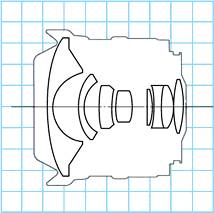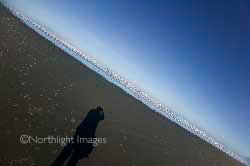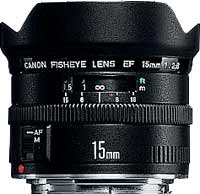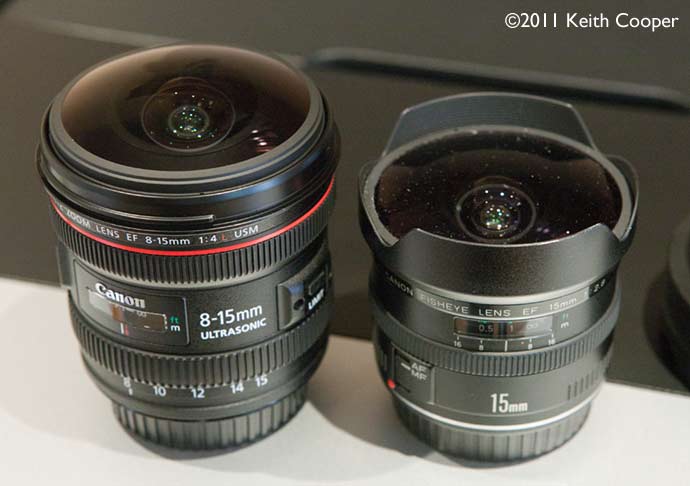
|
| Marketed | April 1987 |
| Lens Construction (groups) | 7 |
| Lens Construction (element) | 8 |
| No. of Diaphragm Blades | 5 |
| Minimum Aperture | 22 |
| Closest Focusing Distance (m) | 0.2 |
| Maximum Magnification (x) | 0.14 |
| Filter Diameter (mm) | -- |
| Maximum Diameter x Length (mm) | 73 x 62.2 |
| Weight (g) | 330 |
Construction

MTF Chart

|
A quick guide to MTF charts (which only measure contrast and resolution. Canon's guide to their MTF charts)
|
||
EF15mm f/2.8 Fisheye lens reviews and articles
- Canon UK | US info page
- Amazon
- Northlight Images - use of 15mm with fisheye hemi lens correction
- Canon CPN article
- Fred Miranda
- Digital Picture
- PhotoZone
- SLR Gear
- Lens Review
- ePhotozine
Sample images
Note the way that any straight line that cuts the centre of the field, remains straight.

Other straight lines are much more likely to curve...

With software correction, the lens can give very useful results, such as this shot of a hotel bar, where the corner is actually a 90 degree one.

| Used Canon Lenses • UK: MPB | Park • USA: B&H | Adorama |
 |
| Welcome to EFLens.com: The world's number 1 Canon Review website with every Canon EF Lens. Read all of the reviews, see detailed specifications and check the price. • EF Lens chronology • EF Lens date codes • EF Lens mount details • EF Lens filter sizes • Compare EF-S18-55 versions • Tweet about it • Tell a friend • Send feedback |
 |
| Canon Lens List: • EFLens.com |
 |
| Sigma Lens List: • Manufacturer's Website |
 |
| Samyang/Rokinon List: • Manufacturer's Website |
 |
| Tamron Lens List: • Manufacturer's Website |
 |
| Tokina Lens List: • Manufacturer's Website |
 |
| © 1987 - 2019 NI |
 Canon EF15mm f/2.8 Fisheye
Canon EF15mm f/2.8 Fisheye
